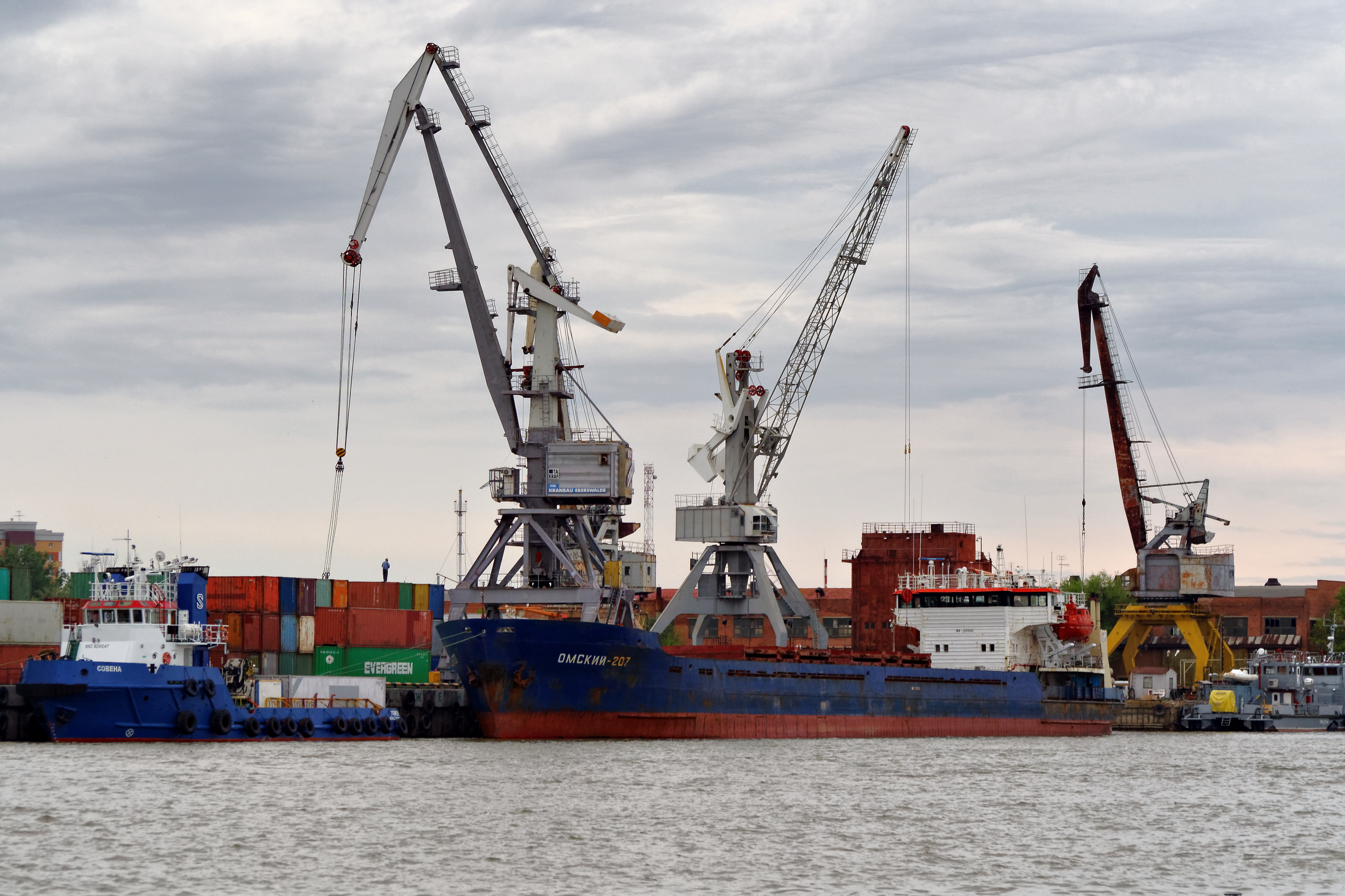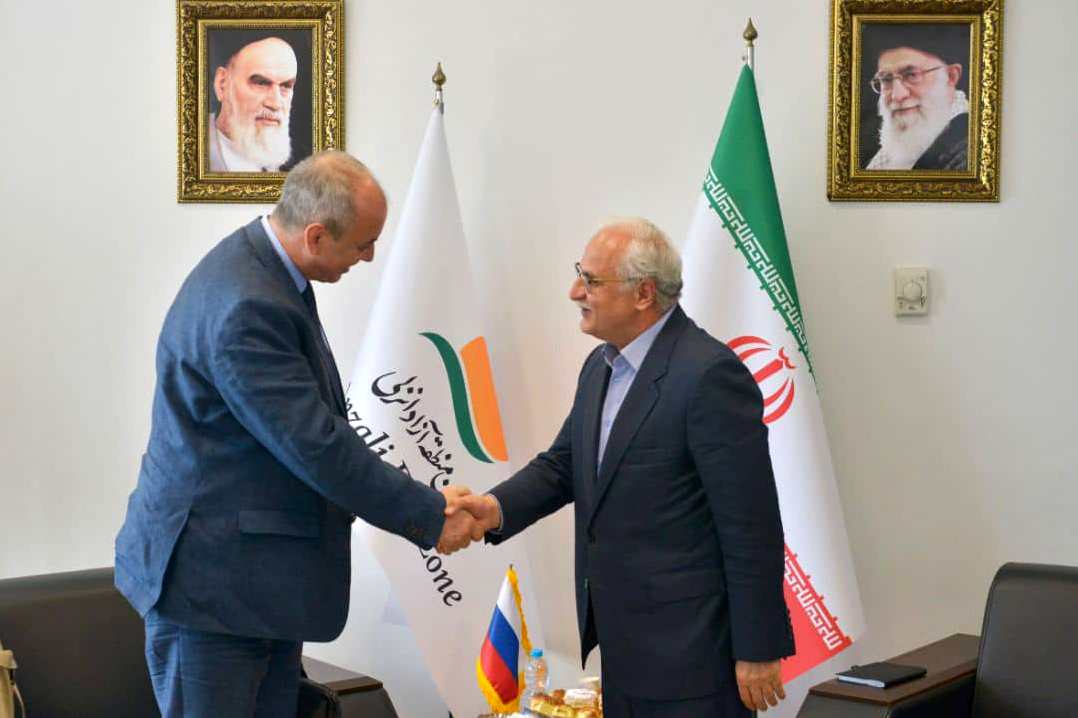
Amid sanctions and ‘logistics pivot’, much attention is paid to the development of the North-South ITC. The recent weeks have seen active launching of services on this route. However, it has some challenges and bottlenecks.
International transport corridor North-South has a western and an eastern branch, both running across Iran. The western one foresees cargo transportation by road via Rasht, the eastern one – by railway. The end point in Iran is the port of Bandar Abbas from which cargo can be delivered to India by sea. The western branch also crosses Azerbaijan, the eastern one – Kazakhstan and Turkmenistan. Besides, direct water transportation from Russia to Iran by the Caspian Sea is possible.
This corridor has been given a strong impetus to the development amid the sanctions. When speaking at the 6th Caspian Summit, Russian President Vladimir Putin said: “We think a lot needs to be done to improve the transport and logistics architecture of the region. First of all, we are talking about building the International North-South Transport Corridor… This is a truly ambitious project, a 7,200-kilometre-long transport artery from St Petersburg to ports in Iran and India. An agreement between the Caspian littoral states on transport cooperation, which came into force last year and is aimed at turning the Caspian Sea region into a major international logistics hub, is designed to facilitate a faster launch of this corridor. And I see how actively this is being developed in Kazakhstan and Azerbaijan. Russia also needs to make a stronger effort in this direction. I would like to inform you that Russia has adopted and is implementing the Strategy for the Development of National Seaports in the Caspian Sea, as well as rail and road approaches to them until 2030. We are expanding the corresponding infrastructure in the Caspian Sea. We are focusing on the ports of Astrakhan, Olya and Makhachkala.”
Improvement of the Volga-Caspian Shipping Canal (VVSC) parameters also contributes to the development of cargo transit by the ITC. The scope of maintenance dredging on VVSC has been increased to ensure its draught of 4.3). Under construction is logistics complex “Caspiy” at port Olya (handling of containerized cargo, general cargo, liquid food in tanks and grain) and a grain terminal in the port of Makhachkala.
.svg.png)
Besides, there is a project on ensuring year-round navigation on the Russian inland waterways along the so-called 'Southern Horseshoe’ (the Astrakhan – Rostov-on-Don route) which is expected to ensure an additional cargo base of up to 4 million tonnes per year.
According to the Federal Marine and River Transport Agency (Rosmorrechflot), the excess of Caspian Basin seaports’ capacity is estimated at 12 million tonnes per year. Thus, the potential for building up cargo turnover is great.
The key problem is insufficient development of railway infrastructure in Iran. As Aleksandr Goloviznin, Director, Logistics and Analytical Research, Morstroytechnology, told at the Shipping 2022 conference, “Iranian ports in the Caspian Sea are not linked to the country’s railway network while railways located close to the ports are single-track, non-electrified and highly-inclined”. That limits the capacity of Iran’s transport infrastructure considerably and makes the route across the country very long.
The service recently launched by RZD logistics on transportation of full-length container trains from Russia to India by the eastern branch of the North-South international transport corridor involving transport infrastructure of Russia, Kazakhstan, Turkmenistan, Iran and India takes up to 37 days. The western branch foresees cargo transportation across Iran involving only road transport.
The situation can improve with implementation of the project on construction of trans-Iran railway but it is a prospect for the longer term.
An alternative available today is the direct transportation of cargo from Novorossiysk to India. Such a service has been launched recently by TransContainer. Cargoes arriving at NUTEP Terminal (part of Delo Group) by rail and road will be forwarded to India once a month in accordance with a coordinated schedule. The number of ship calls will be increased to two in future. Transit time of a sea passage is approximately 14-15 days. However, the route runs via the Suez Canal and areas of armed conflicts, hence extra costs.
Nevertheless, Russia is interested in the development of Iranian transport infrastructure and is ready to invest in it. SEZ Lotos JSC and Paya Tarabar Sina, a company established by Iranian foundation Mostazafan for interaction in logistics, signed an agreement on cooperation in establishment of joint ventures for the development of the North-South ITC.

“That is not our first agreement with Iranian foundation Mostazafan, but we have made our cooperation more specific now. The foundation is ready to invest in port infrastructure and equipment, participate in organization of cargo transit across Iran from Astrakhan to Mumbai and back, removal of administrative barriers, in trading and marketing. For that purpose, the Iranian side is ready to join hands with the Russian partners for establishment of joint ventures and companies in Russia and Iran, or, if necessary, in other countries, for example in India. First of all, the focus is on special economic zone of port type in the Astrakhan Region,” commented Sergey Milushkin, General Director of SEZ Lotos JSC.
Under consideration is also the creation of a joint Russian-Iranian free economic zone and the organization of financial exchanges in the territories of the port SEZ in the Astrakhan region and the Anzali FEZ in Iran.
Apart from insufficient infrastructure in Iran, there are other problems including those on the Russian side. As Andrey Kutepov, Chair of the Federation Council Committee on Economic Policy, said at the meeting dedicated to the North-South ITC development in terms of the Caspian Basin infrastructure, “the problems related to imperfection of regulatory framework, infrastructure bottlenecks and insufficient number of ships have not been solved yet”.
Nevertheless, it is especially advantageous for Russia today to turn the North-South ITC into a full-scale transport corridor with a well developed infrastructure. We expect the growth of investments in infrastructure development and the growth of cargo flow on the route.
More industry-related content is available on our social media pages: YouTube, Telegram, Twitter, Yandex Zen




